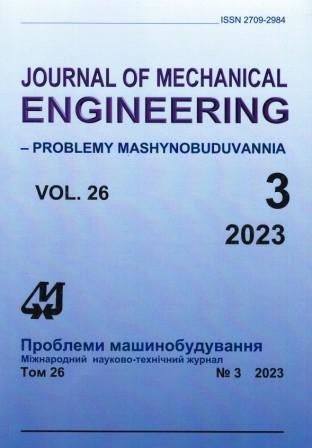Changes in the Thermal and Stress-Strain State of the HPC Rotor of a Powerful NPP Turbine after the Blades Damage
Abstract
In practice, during the operation of steam turbines, accidental damage to the blades of the rotors and stators of powerful steam turbines occurs. The main causes of emergency stops of steam turbines were vibration fatigue of the blades material, erosive damage to the blades body, and resonance problems during the power equipment operation. Based on this study, the assessment of changes in the thermal and stress-strain state of power equipment elements, which at nuclear power plants significantly affect the continued operation of the turbine after its damage, are quite relevant. Changes in the thermal and stress-strain state, which may occur after damage to the rotor of high-pressure cylinder (HPC rotor) of the K-1000-60/3000 turbine power unit of the LMZ in the station conditions, have been considered and analyzed and will provide an opportunity to assess the individual resource and continue the power unit operation. In the calculated assessment of changes in the thermal and stress-strain state of the HPC rotor, taking into account the data of the technical audit regarding damage, a geometric model of the rotor was created. Studies were conducted for three options of designs: the original option (five stages of the HPC rotor), the option without the blades of the last stage and the option without the fifth stage (with four first stages). For the project design, when working at the nominal parameters of the steam, the most stressed areas are the unloading holes of the 5th stage (σi=202.8 MPa), axial hole of the rotor in the area of the 5th stage (σi=195.2 MPa), as well as the 5th-degree welding fillet from the side of the end seals (σi=200.3 MPa) and unloading holes of the 4th and 3rd stages with a stress intensity of about 170–185 MPa. The high values of the stress intensity in the area of the 5th stage can be explained by the significant concentration of the mass of both the stage itself and its blades, which provoke significant centrifugal forces when working at the nominal rotation frequency. For a HPC rotor without blades of the 5th stage, there is a shift of the maximum stress intensity to the area of the unloading holes of the 4th and 3rd stages, as well as the axial hole of the shaft under the same stages. The maximum stress value is σi max=184.8 MPa. At the same time, the intensity of stresses in the area of unloading holes of the 5th degree decreased almost by half, to the level of 124 MPa.
Downloads
Published
Issue
Section
License
Copyright (c) 2023 О. Ю. Черноусенко, В. А. Пешко, О. П. Усатий

This work is licensed under a Creative Commons Attribution-NoDerivatives 4.0 International License.
All authors agree with the following conditions:
- The authors reserve the right to claim authorship of their work and transfer to the journal the right of first publication of the work under the license agreement (the agreement).
- Authors have a right to conclude independently additional agreement on non-exclusive spreading the work in the form in which it was published by the jpurnal (for example, to place the work in institution repository or to publish as a part of a monograph), providing a link to the first publication of the work in this journal.
- Journal policy allows authors to place the manuscript in the Internet (for example, in the institution repository or on a personal web sites) both before its submission to the editorial board and during its editorial processing, as this ensures the productive scientific discussion and impact positively on the efficiency and dynamics of citation of published work (see The Effect of Open Access).

